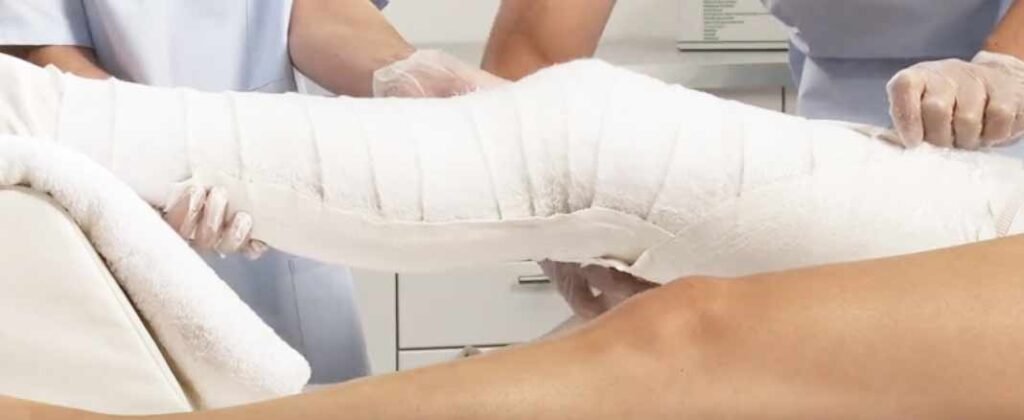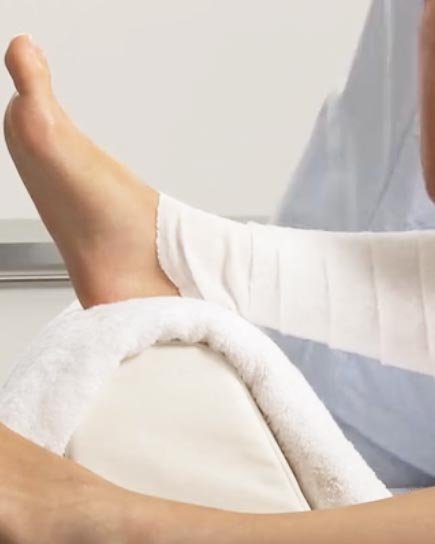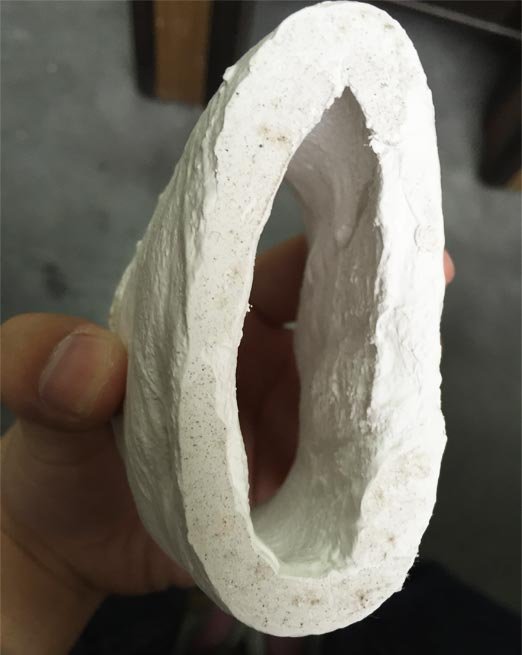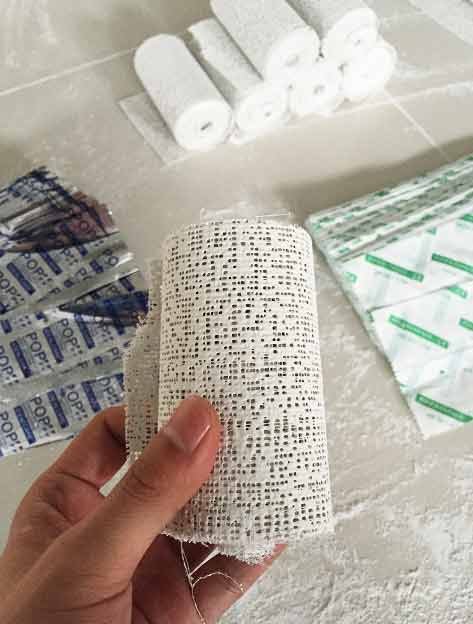plaster of pairs bandage attentions
Catalogue
1.The principle of plaster of pairs bandage fixation
The gypsum reacts chemically with water and gradually dries and releases heat. At this time, the patient will have burning sensation, but afterwards you will feel clammy due to gypsum water. These are normal symptoms like, it will not have any effect on the affected limb. Patients should be relieved of their doubts and ensured to be fixed do not move the hind limbs randomly, so as not to affect the effect of fixation. Before plastering, stone the plaster tape must be soaked in water before it can be used, so within a period of time after the plaster is wrapped, The plaster is still very moist, and the moist plaster means that it has not hardened and is easily deformed, so after covering the plaster of pairs , the curing time is about 2-5min but you must wait for it to bone dry (usually 24 to 48 hours) before it can support weight. After the gypsum is slightly dried, it can be dried in an outdoor ventilated place. Do not burn it with fire.To prevent the plaster from cracking or the patient from scalding.

2.Prepare the skin of the affected area before the cast
When it takes a long time due to plaster fixation it can’t be opened casually after fixing, so wash the skin with soap and water before application.
Skin, wipe off the dirt on the skin, it can be disinfected with alcohol and then wrapped with a sterile treatment towel, with the wound should be changed to prevent infection. The plaster must be kept dry and clean. If the wrapped plaster is corroded by water, it will not only shorten its service life , and the wound on the affected area is also prone to infection, so you can use a plastic bag when taking a bath protect the plaster from water, and don’t step on the damp limbs that wrap the plaster on the ground. In the cold season, pay attention to the warmth of the plastered limbs to prevent freezing hurt. Keep cool in summer and avoid sweating. The plaster has been fixed for a long time, maybe the skin in the plaster will feel itchy, so don’t stick foreign objects into the plaster and scratch it. Or remove the cotton lining, as this may cause skin damage.
3.Relieve swelling of the affected limb
The trauma itself can cause bleeding and swelling of the limbs, combined with the pressure of the plaster, can cause limbs more prone to swelling and other discomforts. The following methods are recommended to relieve the swelling of the affected limbs:
(1) Elevate the affected limb and increase venous blood return. Put the limbs up with a soft pillow or bedding to reduce the swelling of the limbs, the affected limb should be raised and placed in a chair even when sitting down.
(2) In the first 24 hours, put ice cubes with an ice pillow and apply cold compresses next to the affected area.

4.Fixed position of plaster of pairs bandage
Too tight a plaster may also compress the peripheral nerve tissue, resulting in compression nerve paralysis. The lower limb plaster compresses the fibula head, which can easily cause peroneal nerve paralysis. Paralysis like a plaster compresses the radial nerve, which can easily cause paralysis of the radial nerve. So plaster is solid If you find numbness, pain, dysfunction of the fingers and toes after the appointment, it may be early symptoms of oppressive nerve palsy. There is no loose space in the plaster pipe, such as If the plaster bandage is too tight, or the limb is swollen, it will cause the compartment syndrome, causing limb ischemic muscle contracture or limb necrosis. This complication is very serious, so you must not take it lightly. The joints of the limbs must be fixed in the cast functional or special seats required.
5.Observe more after putting on the plaster
the extremity. After the cast is fixed, the patient breathes out and unbearable, usually caused by plaster pressure, once this phenomenon occurs, it should be open the window or replace the plaster on the painful area. Unusual smell or pain in the cast area In case of pain, you should go to the hospital for review or change the plaster in time, and you must not be careless. limb swelling subsided, causing the plaster to become too loose and lose its fixation effect. It should be replaced in time.
6.Plaster syndrome
Plaster syndrome: refers to the plaster that bandages the trunk (cast vest, chest and brachial gypsum, hip herringbone gypsum, frog gypsum, etc.). Acute gastric dilatation that occurs after one of the serious complications of ointment fixation. If found early, there is still room for rescue;
If found late, it is difficult to deal with and the prognosis is poor. So pay attention to prevention.
(1)When bandaging the plaster, be sure not to be too tight, and leave a gap in the abdomen that bulges after eating.
(2) Do not overextend the fixed position of the spine.
(3) Use a small amount of gypsum Meals are appropriate, do not eat or drink.
(4) Change your body position appropriately, such as lying on your side or prone To relieve the oppression of the transverse part of the duodenum
7.Protection of plaster of pairs bandage
the plaster to avoid cracking when turning over or changing positions. Lower limbs or feet after the plaster is applied, it is generally not suitable to walk on the ground. When it is necessary to go on the ground, the plantar plaster an iron plate should be added. Do not touch the ground directly with the plastered plaster to avoid wear and loss of solidity. set role. Don’t use a knife to cut the plaster that has been placed.
8.Demolition time
According to the fracture site and the situation, the time to put on the plaster is determined. Generally, the upper limb bones folding, plaster fixation for 4 to 6 weeks, lower limb fractures for 6 to 8 weeks, follow the doctor’s instructions platoon, don’t dismantle it casually.
9.exercise
During the process of plaster bandage fixation, active muscle relaxation and contraction exercises should be performed. The designated joints should be moved early.
10.After bandaging
After the plaster of pairs bandage is wrapped, the condition and date of the fracture should be indicated on the plaster. The doctor will decide the review time and the time to remove the plaster based on the patient’s condition In the meantime, the patient is asked to follow up the consultation at the agreed time, so as to ensure good treatment therapeutic effect. Plaster fixation is not a firm fixation method, after treatment
During the process, the displacement of the fracture may increase, and the doctor will make progress according to the specific situation. One-step treatment, such as manual resetting and plaster fixation or switching to surgical treatment. Therefore, you must remember to follow up.


chinadamed@gmail.com
Hello, I am the author of this article, I have been engaged in the medical industry for 13 years, if you want to wholesale medical products from China or want to know more information about medical products, please contact me.
TEDAMED


